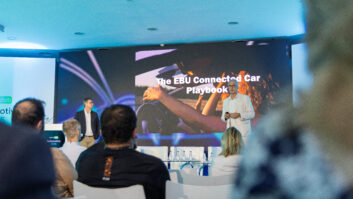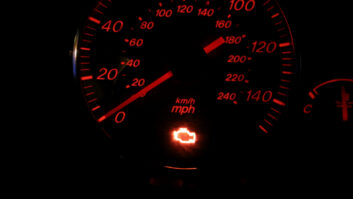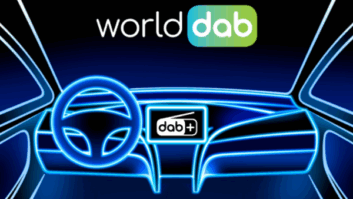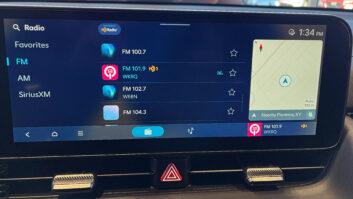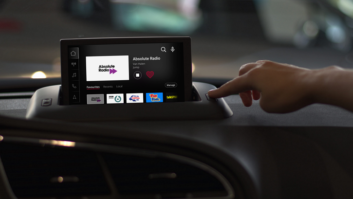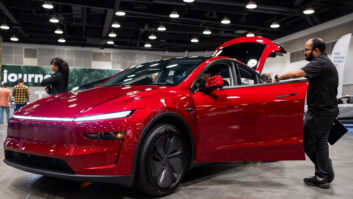While broadcasters believe the market of HD Radio receivers is growing at a painstaking pace, the lead time for any product in the consumer market takes a while.
Neural Audio CEO Geir Skaaden believes it will be 2010 or 2011 before we see real HD Radio receiver penetration. “It’s not there yet but it’s coming,” he said crediting iBiquity and the HD Digital Radio Alliance for getting the top-tier brands in automotive consumer electronics to make HD Radio fundamental to their next product cycles.
And in the next two to three years, early adopter broadcasters will also be upgrading their IBOC equipment, he predicts, much like some early adopter large broadcast TV companies are already upgrading their digital gear.
Neural is seeing broadcasters take advantage of services that offer value-added audio entertainment, such as car telematics and audio and images in the home, from the simple level of album art to, at a more advanced level, streaming ads. “The targeted streaming ads you see on the Internet today, those ad rates are a higher rate-per-thousand than for TV. There’s no reason you can’t tag that for audio entertainment, Skaaden said.
Neural: MP3, iPod-Sourced Music Rates High
(click thumbnail)Neural found that 50 percent of its survey participants preferred iTunes and iPods, which are forms of compressed audio, as sources of music for their customers over CDs or DVDs. Source: Neural Audio
The consumer electronics industry, meanwhile, is losing control over content and that’s a challenge for those who build audio systems. There’s no way for someone designing a playback system to know the quality of the content, according to Neural Audio CEO Geir Skaaden.
With the close relationship between people and their digital media, “people are ripping their own CDs and not necessarily paying attention to the levels,” he said.
Compressed audio sounds fine on earbuds and headphones, as CE sales will attest, but it sounds worse if you take that same MP3 or iPod audio and play it back on a premium home or car stereo system.
That’s because the stereo masker gets “unmasked” and the sound “image” is expanded, according to Skaaden, who said the company has a way of compensating for that in a post-processing mode that makes adjustments in the playback system. The Neural-THX Surround Digital Music Mode is designed for any compressed audio. It also works with an HD Radio system.
To illustrate that point, at AES in San Francisco in October, Neural discussed survey results of about 60 participants from the September CEDIA show; an event focusing on staff at CE stores, custom installers and equipment resellers.
Neural was surprised to find that 50 percent of its survey participants — those who spend more than $2,000 on their stereo system — preferred iTunes and iPods, which employ compressed audio, as sources of music for their customers over CDs or DVDs.
Neural thought it would be reverse, that a high-end audio user would prefer CD and DVD audio. “People aren’t just carrying iPods around. They’re plugging into whatever they can” to download music for convenience, and not necessarily for audio quality, according to Skaaden.
Eight percent of survey participants said radio, which can also be compressed audio, was the most important source of music.
Warren to Lead Alliance; HD2 Ad Changes Too
The HD Digital Radio Alliance is undergoing a leadership change. Now that it is established and has strengthened relationships with automakers, receiver manufacturers and retailers, it’s moving into more of a marketing phase — precipitating a change at the top.
As of Jan. 1, 2009, Peter Ferrara will step away from the president/chief executive role and Diane Warren, now executive vice president, takes the top job. She had been promoted to EVP from a senior marketing/communication position in January.
Ferrara felt it was “time for a change” and that Warren’s talents are more suited to the new role of the alliance. He is staying on as an advisor and says he has other opportunities he’s vetting with investment and technology companies. Observers believe Ferrara is ready for something new.
Alliance member broadcasters are still be committed to funding the group, Ferrara said, and there will still be ad campaigns promoting HD Radio. In fact, a holiday campaign began Nov. 5.
Warren said her goals are to keep broadcasters focused, to have engaging ad campaigns and to “continue to have that conversation with consumers” as well as be a resource for HD Radio, noting that alliance member broadcasters will still fund ad campaigns to promote HD Radio.
When the alliance launched in December 2005, there were 300 stations on-air with IBOC and 40 multicast channels. Now there are more than 1,800 stations on-air and 900 multicast signals.
The alliance has also lifted its voluntary restrictions on multicast ads and programming.
The HD Radio Alliance comprises Clear Channel Radio, Beasley Broadcast, Citadel Broadcasting, Greater Media, Entercom, Bonneville International, CBS Radio, Emmis Communications and Cumulus.
— Leslie Stimson

